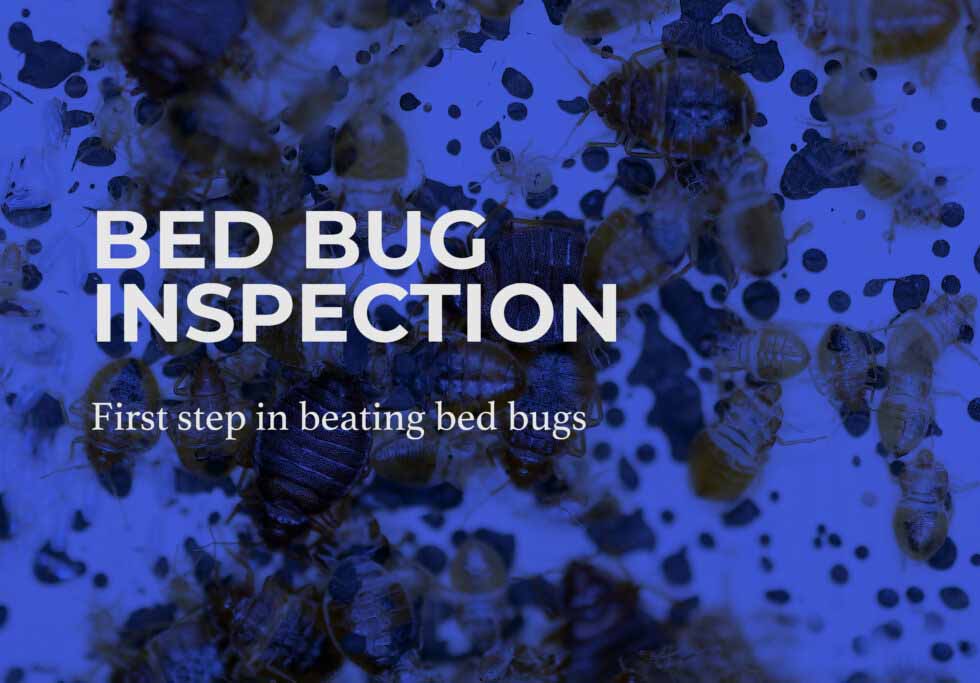Some Known Details About Bed Bug Services
Table of ContentsThe Definitive Guide to Bed Bug ServicesThe Of Bed Bug ServicesThe 9-Minute Rule for Bed Bug ServicesThe smart Trick of Bed Bug Services That Nobody is Talking About
A thorough bed bug inspection by experts is much more than a simple walkthrough and demands careful attention. Bed bugs are small, elusive, and adept at hiding that hide in narrow spaces, corners, and upholstery. Because of their secretive nature, a thorough inspection is essential to identify the full scope of the problem. Professional inspectors employ a range of techniques, tools, and expertise to locate pests effectively, preventing spread and further infestation.The first step in a proper inspection involves understanding bed bug biology and behavior. Bed bugs belong to the order Hemiptera and undergo a life cycle that includes eggs, nymph stages, and adulthood. Adults are oval, flat, reddish-brown insects that lack wings and have long legs and antennae. Their segmented proboscis allows them to pierce the skin and feed on blood, producing skin irritation and visible marks. Knowing these traits enables detection of likely areas for bed bug activity.
Early detection is essential for preventing large infestations. Professionals carefully check for signs such as tiny ink-like droppings, molted skins, and egg clusters (Bed Bug Services). A single female can lay hundreds of eggs, potentially causing full-blown infestations. Evidence of discarded skins and eggs shows that the infestation is current and requires prompt inspection
Preparing for an inspection involves careful organization. Inspectors often advise removing items that block access, which facilitates examination of hard-to-reach areas. Bedding and linens may be treated with heat before inspection, and then stored in sealed bags to prevent re-infestation. Wall decor, mirrors, and pictures should be taken down to check hiding places. Vacuuming furniture and floors can remove loose pests, and vacuum bags should be disposed of immediately outside.
Unknown Facts About Bed Bug Services
The inspection itself is systematic and thorough. Inspectors start with beds and adjacent furniture, looking closely at creases, joints, and folds. Upholstered furniture, including sofas and recliners, is inspected thoroughly, including underneath and inside cushions. Baseboards, moldings, the edges of wall-to-wall carpeting, electrical outlets, closets, and storage areas receive detailed attention, as these can be frequent hiding places.
Specialized tools improve inspection effectiveness. Flashlights, magnifying lenses, multi-tools, and mirrors allow examination of tight spaces. Monitoring devices like interceptor traps or sticky pads help track bed bug activity over time. right here Some companies use detection dogs, which accurately identify active infestations, distinguishing them from residual signs.

Meticulous documentation plays a critical role. Inspectors document all signs, infestation levels, and suggested measures. This supports transparency and facilitates discussion with residents. Residents are often advised not to remove blood-stained sheets or vacuum infested areas, as this ensures look at this web-site accurate results.
After inspection, a monitoring plan may be recommended to follow up on findings. Continuous monitoring assesses the effectiveness of treatment, and interviews with household members provides additional insight. Cooperation from residents supports the inspection process.
The Greatest Guide To Bed Bug Services

Professional inspections are more reliable than self-inspections. Trained inspectors spot subtle signs overlooked by untrained eyes, prevent misdiagnosis, and give peace of mind.
Bed bug inspections are particularly important in high-risk environments. Inspectors check neighboring rooms and shared spaces to confirm complete assessment (Bed Bug Services). This supports comprehensive control
In summary, a professional bed bug inspection involves understanding bed bug biology, preparing the space, conducting systematic inspections, using specialized tools, documenting findings, and implementing monitoring protocols. Each step contributes to accurate detection, effective treatment planning, and long-term prevention.
The Greatest Guide To Bed Bug Services
